Historic Travel

You know, I've been thinking a lot about travel, and specifically, historic travel. It's like trying to dive into the ocean of time, swimming alongside travelers of yesteryear, and discovering the footprints they've left behind. There's just something incredibly fascinating about walking through cobblestone streets where ancient Romans once tread or standing in a medieval castle that held whispers of knights and tournaments. Historic travel offers something more than just picturesque landscapes—it offers a chance to step into stories that have shaped our world. And isn't that what makes travel so utterly captivating?
We often talk about travel as if it's just about moving from one place to another, but really, historic travel is like a time machine. Okay, maybe not a literal one; we don't become time lords with magic keys. Yet, it allows us to experience moments frozen in time—like those Renaissance paintings that capture so much life in stillness. Historic travel brings you face to face with the architecture, art, and artifacts that are the physical echoes of human achievements. It's like having the chance to walk through a living museum that extends far beyond its walls and inscriptions.
Come to think of it, historic travel can be a bit of a paradox. On the one hand, you have this incredible opportunity to really immerse yourself in ancient cultures and traditions, stepping back in time. But then there's the realization that we see only fragments of what once was. Ruins and relics tell only part of the tale. There's a certain gap between what we experience today and what might have been experienced back in the day. Isn't it curious how we fill those gaps with imagination, speculation, and sometimes a little bit of romanticism? I sometimes wonder whether we idealize the past too much, glossing over the gritty bits because they're conveniently forgotten over time.
The Allure of Historic Monuments
When you think about historic travel, places like the Colosseum in Rome or the Pyramids of Giza inevitably spring to mind. It's like these monuments have a gravitational pull of their own, drawing millions of visitors from around the world. Each stone, each archway carries a thousand stories. Imagine wandering through Machu Picchu and marveling at the Inca ingenuity, or standing under the vast dome of the Hagia Sophia and pondering the lives of those who sought prayers there. These monuments are silent witnesses to history, yet they speak volumes if you listen closely enough with your heart.
Oddly enough, when I stand before these grand vistas of history, I often find myself struck by a sense of humility. I mean, here are these awe-inspiring creations that have stood for centuries, while we humans are fleeting visitors in time. It puts one's own problems into perspective, doesn't it? But then, I sometimes feel a pang of guilt—what if, by visiting and photographing these sites, we're reducing them to mere backdrops for our social media feeds? Maybe historic travel is as much about contemplating our role as custodians of the past as it is about building personal memories.
Cultural Heritage and Its Complexities
Diving deeper, you start to realize that historic travel often involves complex questions of cultural heritage. Who owns history? Who gets to tell its story? As travelers, we sometimes stumble blindly into cultural landscapes steeped in colonialism, war, and struggle. And while it can be tempting to gloss over these complex narratives, acknowledging them enriches our understanding significantly. It's easy to stand in awe before the beauty of the Taj Mahal, but understanding the socio-political dynamics that led to its construction can be a gateway to a more profound experience.
But I'm going off on a tangent here, that's just how my mind works sometimes. Reflecting on this, I often question how we, as temporary heirs of these narratives, should approach historic travel responsibly. It’s more than about ticking places off a list; it’s about engaging thoughtfully with what those places mean on layers we may not immediately see. When you visit a museum or a heritage site, it might seem straightforward—look, snap a photo, move on. But maybe there's something deeper to it, like listening to the unsaid words amid the preserved silence.
Modern-Day Historic Travel Experiences
Ah, and let's not forget that historic travel nowadays isn't all about ancient buildings and monuments. It's also about engaging in traditions that have woven their way through time. Think of the way food tells tales of exploration with spices transported halfway across the world, or how dance and music carry ancient rhythms into the present. There’s even a modern twist when you consider the digitization efforts that let us explore historic sites virtually. Thinking about it, perhaps this digital aspect makes old places accessible to new audiences, broadening the impact of historic travel. Technology enriches our historical understanding in unprecedented ways, yet it can also dilute the pureness of firsthand experience. There's definitely a tension between authenticity and accessibility when history meets the digital age—I wonder if that's a compromise worth making.
Getting more granular, let's talk about the emotional aspects of historic travel. It has this way of wrapping you in a comforting yet unsettling mix of nostalgia and newness. You find yourself in a place that feels both foreign and familiar. The more I think about it, the more I realize that it's not quite like time travel. No, it's more like being on a bridge—like standing in between times, with the past stretching out on one side and the present on the other, leaving room for contemplation and connection. Then again, there’s always a bit of hope that, maybe, by learning more about the past, we could chart a better course towards the future.
It's funny how much you can muse over something as simple as walking through an ancient city. There's no one way to experience historic travel, no one-size-fits-all formula. Everyone brings their own perspectives, hopes, and dreams to the path less traveled. And in a way—come to think of it—maybe our interactions and reflections create a brand-new layer of history, written invisibly by all those who pass through. Worth pondering, isn't it? As I write this, I wonder if this jumble of thoughts paints a clear enough picture or just offers a starting point for those who seek to explore history. Either way, it seems like historic travel is a journey as much inward as it is outward, doesn't it?
Rome Trevi Fountain Fee Starts February 1, 2026

Giza Grand Egyptian Museum Opening Transforms Tours
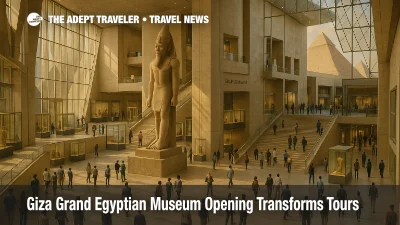
Egypt lifts relics from sunken city Alexandria

Stephen Ambrose Historical Tours unveils 3 new 2026 trips
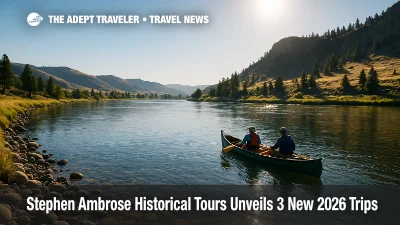
'Pompeii tourist fined' is your warning: leave the ruins alone

Norwich Castle reopening completes £27.5m renovation
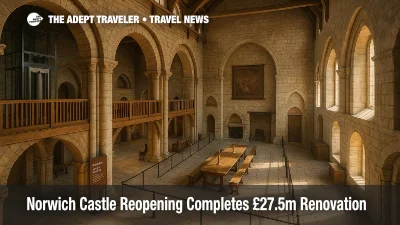
New 32-Day Revolutionary War Cruise Marks America 250

UNESCO World Heritage Sites Reach 1,248 After 2025 Additions

Carnac, Ludwig Castles Join UNESCO World Heritage Sites

Grand Palais, Paris, France Reopens After €466M Makeover
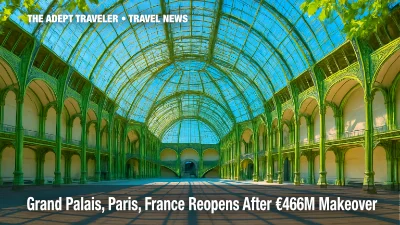
Journeying through Time: Captivating Historical Sites Worth Traveling For
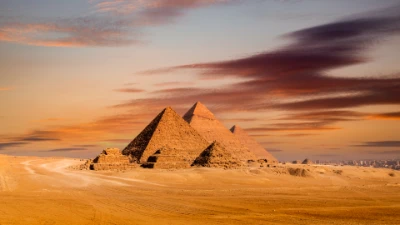
Wonders of the Ancient World: A Voyage Through the Alluring Ruins of Petra

